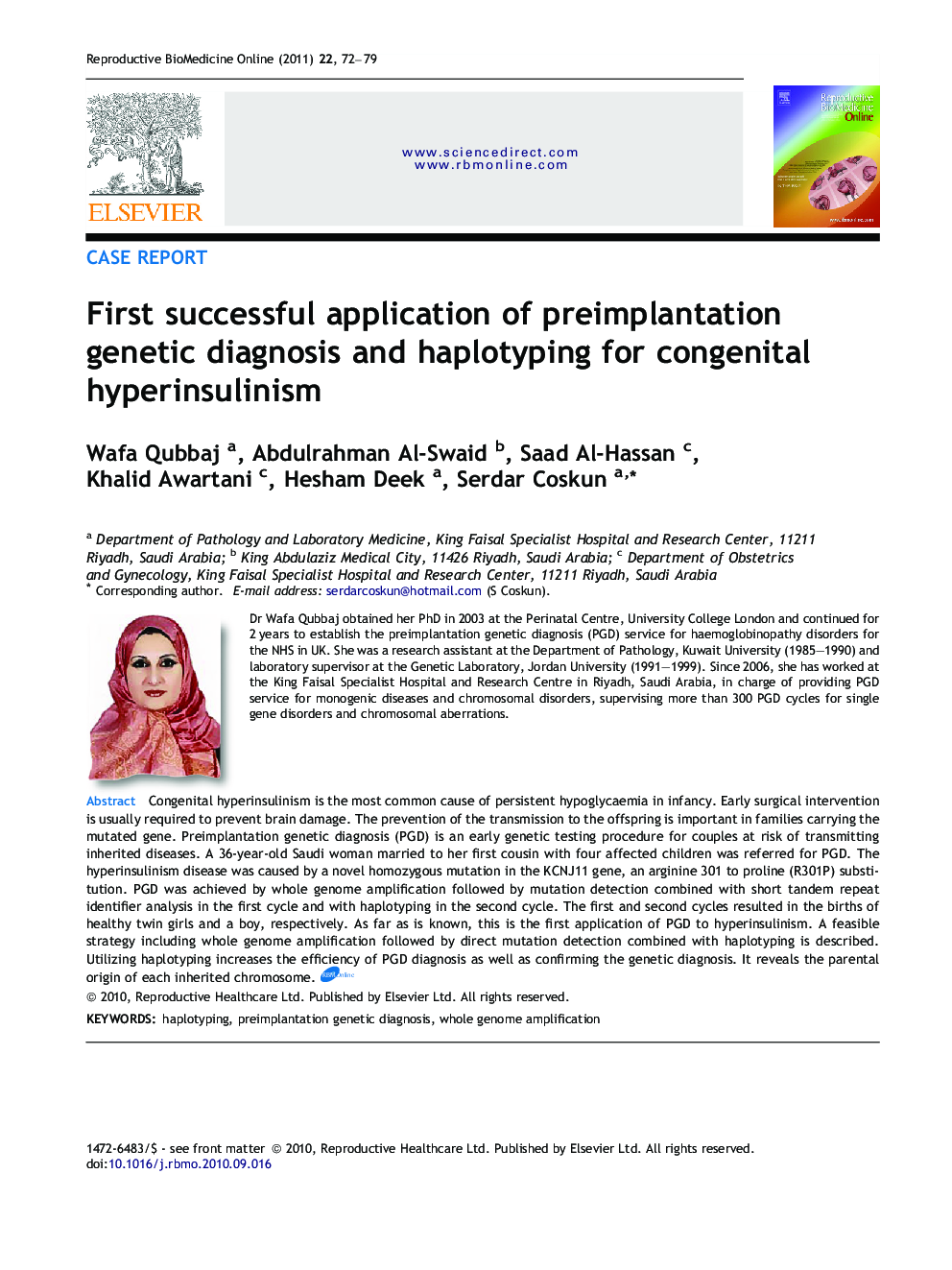| Article ID | Journal | Published Year | Pages | File Type |
|---|---|---|---|---|
| 3971812 | Reproductive BioMedicine Online | 2011 | 8 Pages |
Congenital hyperinsulinism is the most common cause of persistent hypoglycaemia in infancy. Early surgical intervention is usually required to prevent brain damage. The prevention of the transmission to the offspring is important in families carrying the mutated gene. Preimplantation genetic diagnosis (PGD) is an early genetic testing procedure for couples at risk of transmitting inherited diseases. A 36-year-old Saudi woman married to her first cousin with four affected children was referred for PGD. The hyperinsulinism disease was caused by a novel homozygous mutation in the KCNJ11 gene, an arginine 301 to proline (R301P) substitution. PGD was achieved by whole genome amplification followed by mutation detection combined with short tandem repeat identifier analysis in the first cycle and with haplotyping in the second cycle. The first and second cycles resulted in the births of healthy twin girls and a boy, respectively. As far as is known, this is the first application of PGD to hyperinsulinism. A feasible strategy including whole genome amplification followed by direct mutation detection combined with haplotyping is described. Utilizing haplotyping increases the efficiency of PGD diagnosis as well as confirming the genetic diagnosis. It reveals the parental origin of each inherited chromosome.Congenital excess of insulin, hyperinsulinism, is the most common cause of low blood sugar concentrations in infants. Medical treatments are not always effective requiring surgical intervention to prevent brain damage. The prevention of transmission to next generation could be achieved by preimplantation genetic diagnosis (PGD), which tests embryos after IVF for the genetic disease in a family who is carrying the disease. Only normal embryos are chosen for transfer, allowing disease-free babies to born. A 36-year-old Saudi woman married to her first cousin with four affected children underwent PGD treatment. The disease was caused by a change in the DNA sequence of KCNJ11 gene. PGD was achieved by testing the mutation in embryos combined with the testing of genomic markers linked to the gene. After transferring normal embryos to the mother, the first cycle resulted in the birth of healthy twin girls and was followed by the birth of a healthy boy after a second cycle. As far as is known, this is the first application of PGD to hyperinsulinism and this study describes a feasible strategy including whole genome amplification followed by direct mutation detection combined with genomic marker testing. This strategy increases the efficiency of PGD diagnosis as well as confirming the genetic diagnosis.
